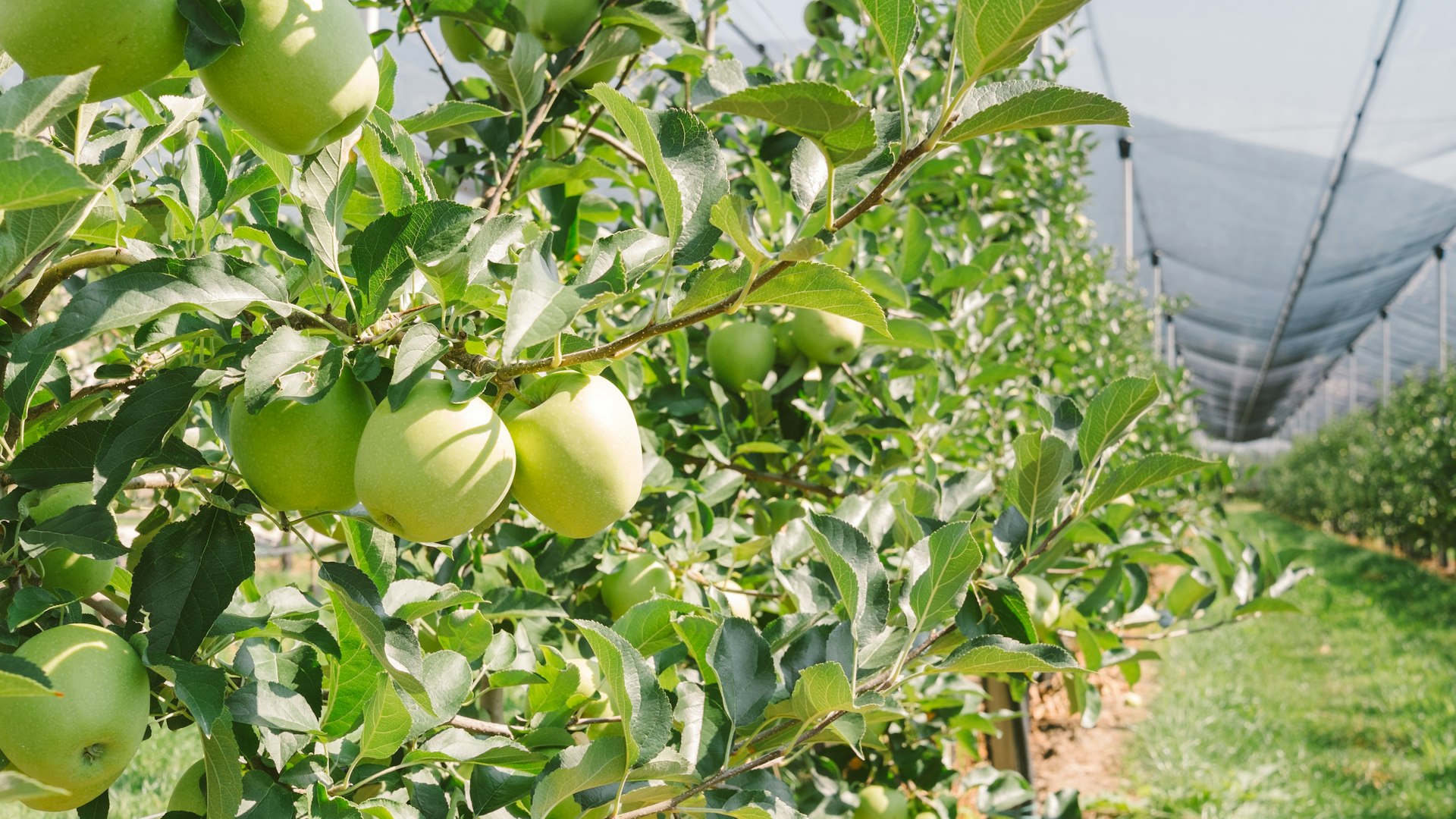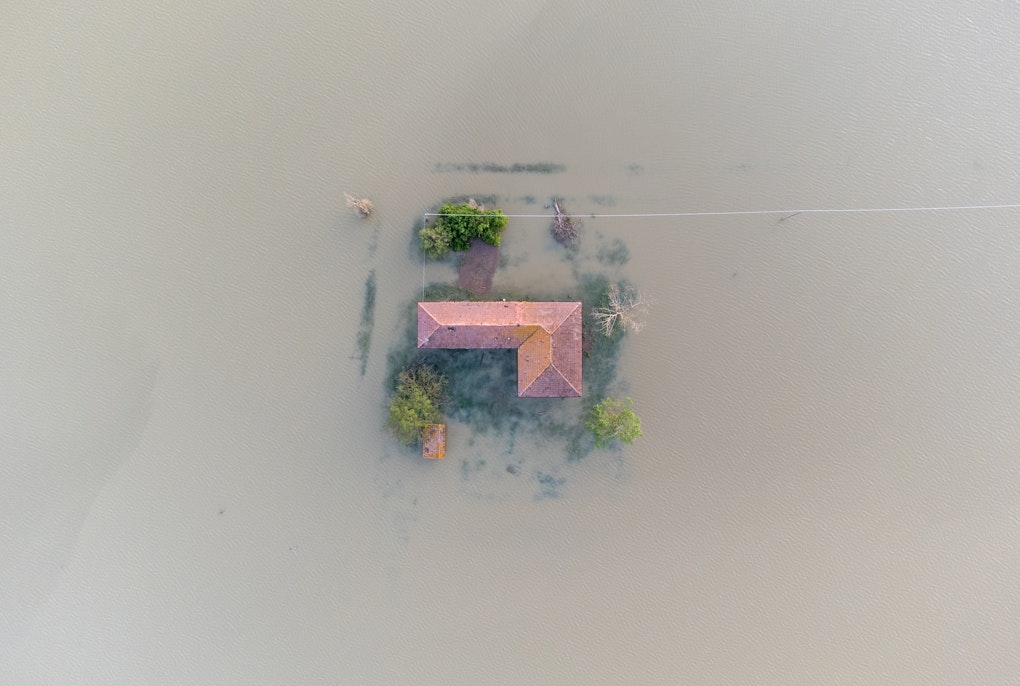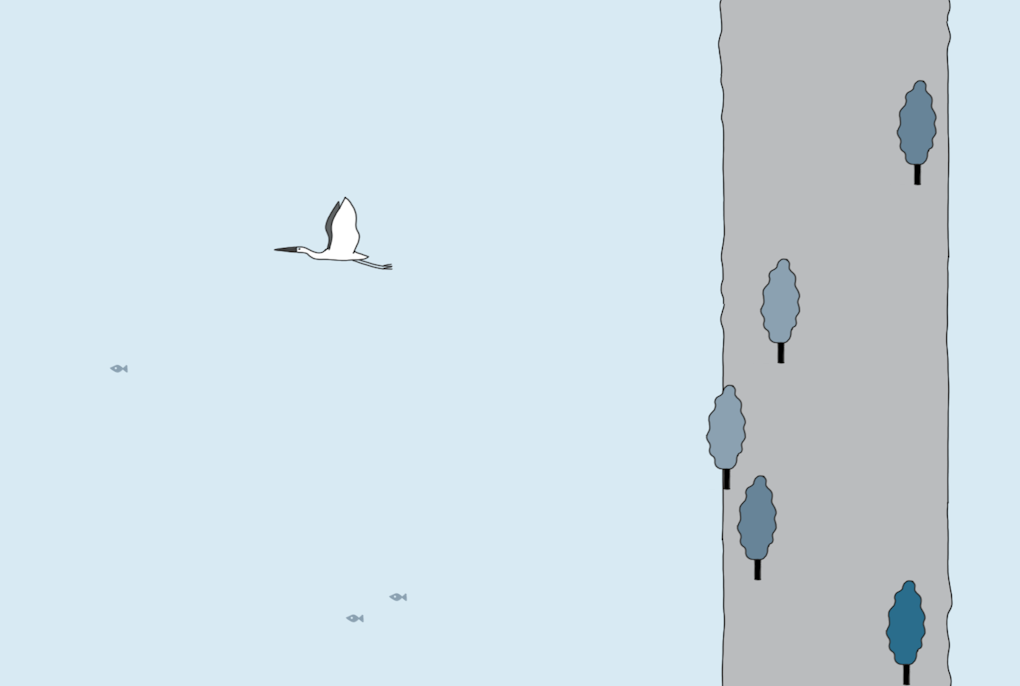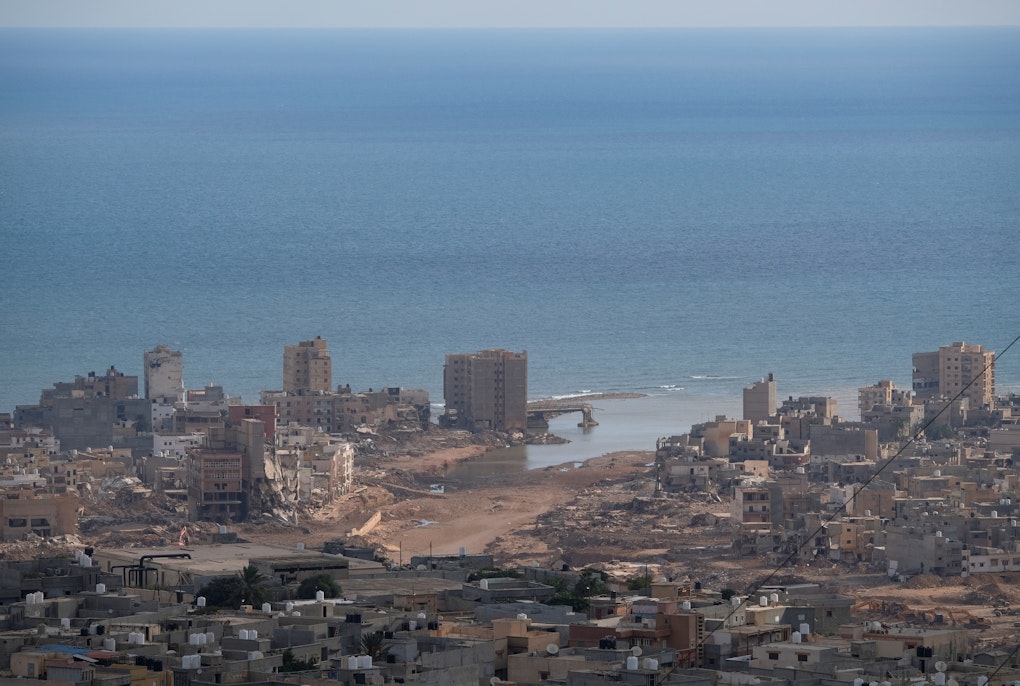Hail nets also help against drought, as they reduce evaporation by about 20 percent.
© Adobe Stock | Stillkost
Climate change is affecting agriculture, water availability is decreasing, and conventional fruit varieties are reaching their climatic limits. Both high-tech and simple measures are being researched to mitigate these effects. Against this changing horizon, South Tyrolean agriculture has to answer some fundamental questions, explain Massimo Tagliavini, Professor at the Faculty of Agricultural, Environmental and Food Sciences (unibz) and biologist Georg Niedrist (Eurac Research).
2023 was the warmest year in 125,000 years and the trend is not abating. Will South Tyrol’s landscape soon be characterized by citrus and olive plantations?
Massimo Tagliavini: Most likely, apart from a few areas, the winters in South Tyrol are not mild enough for purely Mediterranean crops.
Georg Niedrist: Exactly. At least in the next 20 to 30 years, the temperatures here will always be too cold for such crops because of winter inversion, even in valley floors. However, climate change is leading to a geographical shift in climate zones. We already have a climate in Bolzano that is comparable to that of Verona around 30 years ago. So, there is a shift in climate zones towards the north and, of course, upwards in altitude too.
The agricultural sector is certainly the one first and most affected by climate change.
Georg Niedrist
Meaning that agriculture has to adapt to this changing climate?
Niedrist: The agricultural sector is certainly the one first and most affected by climate change. Most of it happens outside and is therefore directly exposed to climate and weather conditions. But even in agriculture, not every product is equally dependent on the weather. In the dairy industry, the influence of the climate is less significant, especially in terms of price. In viticulture, on the other hand, hailstorms, late frost or excessive drought have a direct impact on the price.
Which aspect of climate change will affect agriculture the most?
Tagliavini: The biggest impact will certainly be the increase in air temperature and indirectly, higher soil temperatures too. This is often forgotten. Another important aspect is the increasing unpredictability of the climate. Until now, agriculture has been able to rely on a constant climate. Of course, weather conditions were not the same every year, but for each region there was a long-term average and deviation from this was acknowledged. These deviations from the average have increased significantly. This is particularly evident in frost or very severe, sudden drops in temperature. Extreme heat waves are also occurring more frequently now.
In South Tyrol, we have the terraXcube, Eurac Research’s extreme climate simulator and with it, we can test how such extreme events and fluctuations affect crops. Currently, unibz and Eurac Research, together with the Laimburg Research Center and the University of Innsbruck, are using the infrastructure to investigate the consequences of heat waves for viticulture in the CLEVAS project.
Tagliavini: In several trials in 2021 and 2023, we investigated how grapevines of the Sauvignon variety survive heatwaves, different levels of water availability and temperatures of up to 40 degrees – that is around 10 degrees above average. We carried out tests with apples and vines in the climate chambers. This confirmed that the vine, in contrast to the apple tree as a typical Mediterranean crop, does not suffer particularly from high temperatures, as long as it has sufficient water.
Niedrist: The difference can mainly be seen in the fruit: with grapes, depending on the variety, the quality of the product can even increase with drought, while apples suffer from dry conditions. This is particularly true in terms of quantity, and in fruit growing it’s all about quantity. In viticulture, since the regulation of quantity, the focus has been on quality, and here a slight drought stress in certain ripening phases can even be an advantage.
Does this mean that we can continue to count on good wines in South Tyrol?
Niedrist: South Tyrol has the advantage that we have not yet reached the climatic limits of the vine’s expansion. In comparison, the growing regions in Spain, Australia, Sicily and more recently also the Bordeaux region are already reaching the limits of plant growth at times. Provided there is enough water available, we still have some leeway in terms of temperature. Of course, the ripeness of the grapes and the grape variety are also a criterion. But, we have seen that the plants recover well from such stress phases within one or two days and that the fruit does not suffer any significant loss of quality. We also tested how resilience can be increased through agronomic measures. For example, by removing leaves from the vine so that it loses less water. There are initial positive results here, but it is too early to draw any definitive conclusions.
And how can the apple’s climate resilience be strengthened?
Tagliavini: Apples are usually grafted onto rootstocks at the base of the trunk, and these have very shallow roots. This makes the tree very dependent on irrigation or rain. Perhaps in future we should think about rootstocks that penetrate deeper to make the tree less dependent on the water supply from above. The Laimburg Research Center is already conducting research in this direction. Indirectly, however, hail nets also help against drought, as they reduce evaporation by around 20 percent which is also an important side effect. We will have to investigate where the limit is at which the quality of the apples or the crop yield suffers from a lack of water more closely. Sensors can be used here to indicate when irrigation becomes necessary. It may even also be sufficient to irrigate just part of the root system.
From an agronomic and ecological point of view, water is certainly the central problem, alongside social components or food security.
Georg Niedrist
In any case, we have to assume that the availability of water will decrease?
Tagliavini: Yes, we will certainly have to use water more sparingly in the future. The switch to drip irrigation is an important first step. In principle, there is still too much irrigation happening in South Tyrol; probably because water is so cheap. If we had Apulian prices, water consumption in apple cultivation would certainly decrease.
Niedrist: From an agronomic and ecological point of view, water is certainly the central problem, alongside social components, and food security. We have increasingly less snow in winter because precipitation occurs more in form of rain. We have premature snowmelt, and evaporation is increasing by 5 to 15 percent due to rising temperatures. This combination also leads to lower water availability, regardless of the precipitation average, especially in spring and summer, while at the same time increasing water demand.
And the glaciers, which today enable intensive irrigation even in dry areas such as the Vinschgau Valley, are also shrinking dramatically.
Niedrist: Indeed, by 10 percent in the past two years alone - according to the latest figures from Swiss glacier monitoring. This reservoir, which we have used for irrigation and electricity production over the last 50 to 60 years, will certainly no longer be available to the same extent. Paradoxically, there has been a lot of water in Val Venosta recently due to the high temperatures and the resulting glacier melt. But we are just about to exceed this peak. It is therefore clear that South Tyrol’s agriculture will no longer be able to count on this glacier water in a few decades and the amount of meltwater will have steadily decreased by then. The water deficit in summer will therefore increase and be prolonged. And what is always forgotten: we also have a responsibility towards downstream areas.
Because rice cultivation in the Po Valley is also dependent on our water?
Niedrist: As a mountain region, we share responsibility for the lower reaches of the river. Morally as well as legally, we are required to provide enough water for the areas there. Not at least because we import food from the Po Valley. We will therefore need a long-term strategy that also takes this into account. In addition to our agriculture here, we will also have to rethink our agriculture in the lower reaches of the Adige. We need to look at how much water can be made available to whom and when, together. It could turn out, for example, that rice cultivation in this form is no longer appropriate. At the same time, we also need to review the appropriateness of our fruit cultivation. On the valley floor, with groundwater, it may still be possible; in sandy alluvial areas that are exposed to the sun, it must be questioned from the point of view of water availability.
If the air temperature is around 40 degrees, the fruit can heat up to 50 degrees and get burnt, so to speak.
Massimo Tagliavini
Do all these threats and challenges also act as drivers of innovation?
Tagliavini: Crises have always accelerated progress. At least if you ask the right questions and try to find good answers. And we are currently in such a moment – with all the attention on climate change and many research projects in this area. Genetics will certainly play an increasingly important role in the development of innovative solutions. Apples, for example, can also get sunburn as a result of the rise in temperature. If the air temperature is around 40 degrees, the fruit can heat up to 50 degrees and get burnt, so to speak. In addition to hail nets, a return to stronger and denser tree crowns could be a solution. But if we still want beautifully colored fruit, it will take genetics - to develop varieties that still have attractive coloring despite shade or strong temperature fluctuations between day and night.
Does a large technological effort for food production lead to higher food costs?
Niedrist: Yes, that is another effect of climate change. Adaptation costs money. New technological solutions, sensors, hail nets, an ever faster change of varieties, all this has an impact on the price of the product and the added value. And we already have the major problem in fruit growing that profit margins are getting smaller and smaller.
Crises have always accelerated progress. At least if you ask the right questions and try to find good answers.
Massimo Tagliavini
Do monocultures make it easier or more difficult to adapt to climate change?
Tagliavini: In some ways, adaptation measures to climate change are even easier with monocultures because the system is largely standardized with the help of technology. Just think of frost protection irrigation. South Tyrol is a master in dealing with the risk of late frost. But of course, monocultures also have disadvantages. Mixed crops, meaning several species and different varieties, allow more leeway in dealing with climatic fluctuations. How can science support farmers?
Niedrist: I see our task on two levels. Firstly, on the applied one, where the aim is to provide answers to specific topics such as genetic breeding, soil moisture sensors, automated systems to let’s say very practical solutions. However, science also has the task of looking at different time spans than a farmer or a tourism professional, who mainly must deal with the day-to-day. In this way, scientists can point out scenarios or initiate problems that may seem premature at the moment. 20 years ago, it was hardly conceivable that we would one day have such a serious water problem in South Tyrol like the one we had in spring 2023.
Massimo Tagliavini
Massimo Tagliavini, professor at the Faculty of Agricultural, Environmental and Food Sciences of unibz, is an expert in the ecophysiology of trees. He has published more than 200 papers on this topic, over 80 of them in peer-reviewed journals. His research focuses on the ecologically sound management of tree crops, tree physiology and ecosystems in relation to the carbon and nitrogen cycle, water flows, mineral nutrition and the release of organic matter through the roots into the soil.
Georg Niedrist
Georg Niedrist holds a doctorate in ecology from the University of Innsbruck and has been conducting research at Eurac Research’s Institute for Alpine Environment since 2006. His field of research lies at the intersection and friction point between mountain ecosystems, agriculture and climate. He is currently working on fundamental questions in the field of how plants adapt to climate change. He is also working with practitioners to find solutions for sustainable agriculture.






